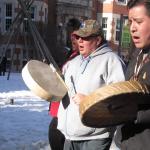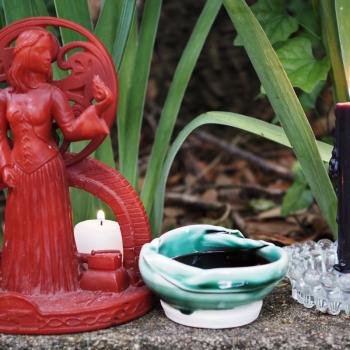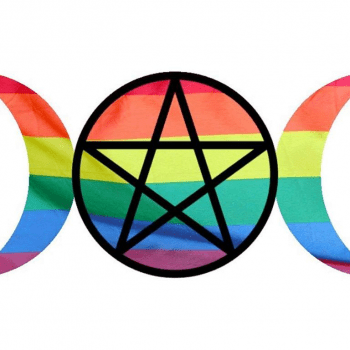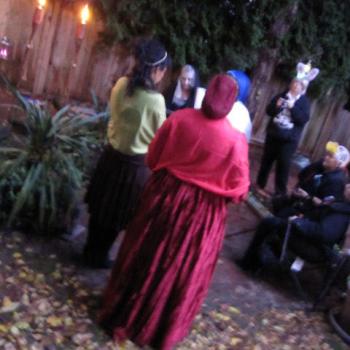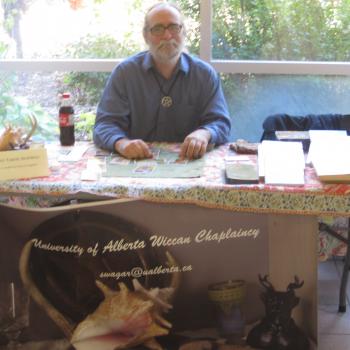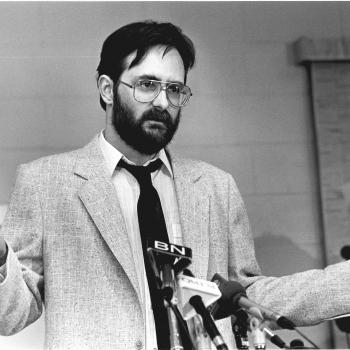Power is everywhere; not because it embraces everything, but because it comes from everywhere… power is not an institution, and not a structure; neither is it a certain strength we are endowed with; it is the name that one attributes to a complex strategical situation in a particular society. – Michel Foucault
Ritual has a complicated relationship to power, both individual and social power. On the one hand rituals are used to announce and confirm transfers of power – to swear in Prime Ministers and Presidents and to anoint and crown Queens and Kings as well as Popes. On the other ritual choices can subvert the established order – as for example when millions of dalits (Untouchables in the Hindu religion) all converted en mass to Buddhism under the leadership of Ambedkar in 1956, as an explicit rejection of the caste system of India and its oppression of the lower castes.
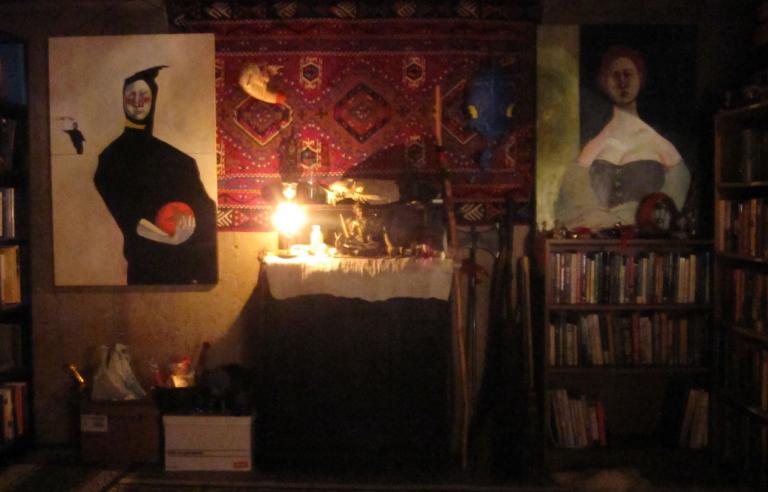
Even those rituals that ultimately confirm the established order of things frequently temporarily dissolve all power relationships and distinctions between people and state that “all are equal here”, requiring all ritual participants to eat the same food together, to wear the same clothing, and to all be subjected to the same discipline. A community of feeling, called by Victor Turner “communitas,” is created that connects all people below the level of social differences and roles. It is only through passing through this period of common humanity that people can be re-incorporated into the appropriate roles in society.
There are also the common rituals of carnival which include periods of license that include the inversion of the established order – women having authority over men, servants over their masters, the Feast of Fools in which the village fool is crowned King for a Day, and the wearing of bizarre costumes. Periods of wild partying and drunken excess, strictly limited in their time and place like Mardi Gras or 420 celebrations, would also be ritual occasions marking and confirming the established order by departing from it so extravagantly.
Frequently religious rituals, especially in the monotheistic religions which emphasize the “otherness” of the God, so much greater than human beings that any distinctions between people are insignificant in comparison with the absolute gulf which opens between humans and the God, are set up so the ritual leaders are, in ritual, purely the servants of the God without any personal authority and as much as possible no personal qualities at all. The ritual garb and uniforms are standardized for this purpose.
Ritual is power as it frames and reframes the power relationships in a society. It authorizes and symbolizes transfer of power in both democracy and autocracy. It grants university degrees, another kind of power and authority. It also is a kind of power when it attacks the established order by asserting a conflict of powers or authority. In the United States the silent prayerful walks of Black protesters against the Jim Crow laws were ritual theatre that asserted the primacy of the values of equality and human dignity over and against the legitimacy of the unjust racist laws. Their ritual power, in particular through the disciplined non-violent witness of hundreds of participants was very important in rallying and recreating a mass movement for social change which reached its finest moment thus far with the election of President Obama, a Black man, 50 years later. Another example of ritual political theatre, less successful, was the naked protests of the Sons of Freedom Doukhobour order when they were being forced to put their children into government schools in the 1950s and 1960s in BC.
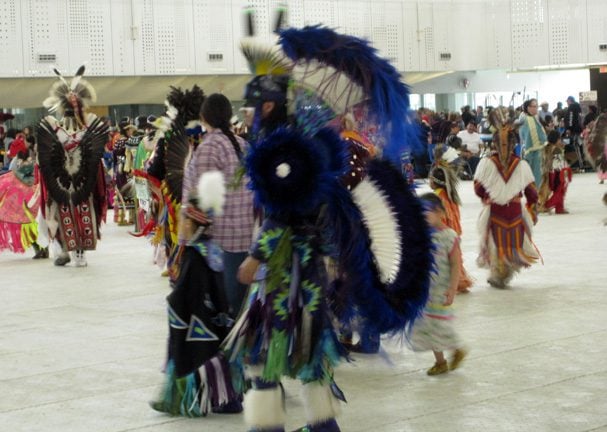
Power relationships in ritual are explicit during their performance – some have leading roles and others do not, some write the rituals and others do not, and the issues that they deal with and the conclusions that they reach are selective. The use of ritual and symbolic action is often also a way to let off steam and prevent more effective political action (although it can work the other way as well – ritual openings can provide space for the larger issues that the ritual is intended to avoid to force themselves onto the agenda). Implicit in ritual, though, are limitations on power – so long as the ritual is needed, then power passes from the Gods or the people to the ruler and she is dependent on them for her authority, and the people have the right to question or revoke their ritual agreements.
Ritual often drains away tension from some part of a community by creating an “imaginary community” (after Benedict Anderson) – defining some people through ritual actions as being a part of the community and others as the enemy, or at least as “others”.
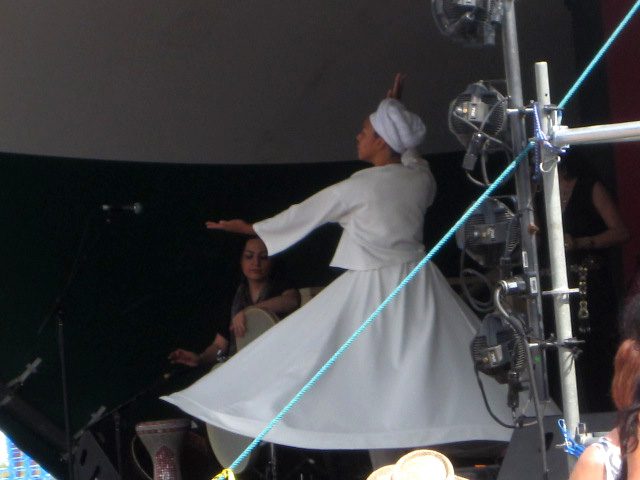
Ritual which brings people together into a common sense of purpose and a common community makes the possibility of united action around the issues easier. It does not, however, determine what that action might be. Ritual aimed at creating power or unifying communities is not democratic – it is strongly determined by the intentions and direction of the ritual authors and leaders. Ritual Civil Rights marches led by Martin Luther King were no less orchestrated and controlled by the leadership than the Nuremberg Rallies of the Nazi Party – the intentions were different and the element of compulsion was not there in the first instance, but the form was set by the leadership, marshals and section leaders were trained in what to do and how to control the crowd, the ideology was strongly inculcated into the large minority of the participants and so on. The creation of lasting power through ritual is not random or unplanned, nor is it spontaneous and “organic”.
Next Week “Ritual as Problem-solving, as Art, as Magic, in the Creation of Community”


